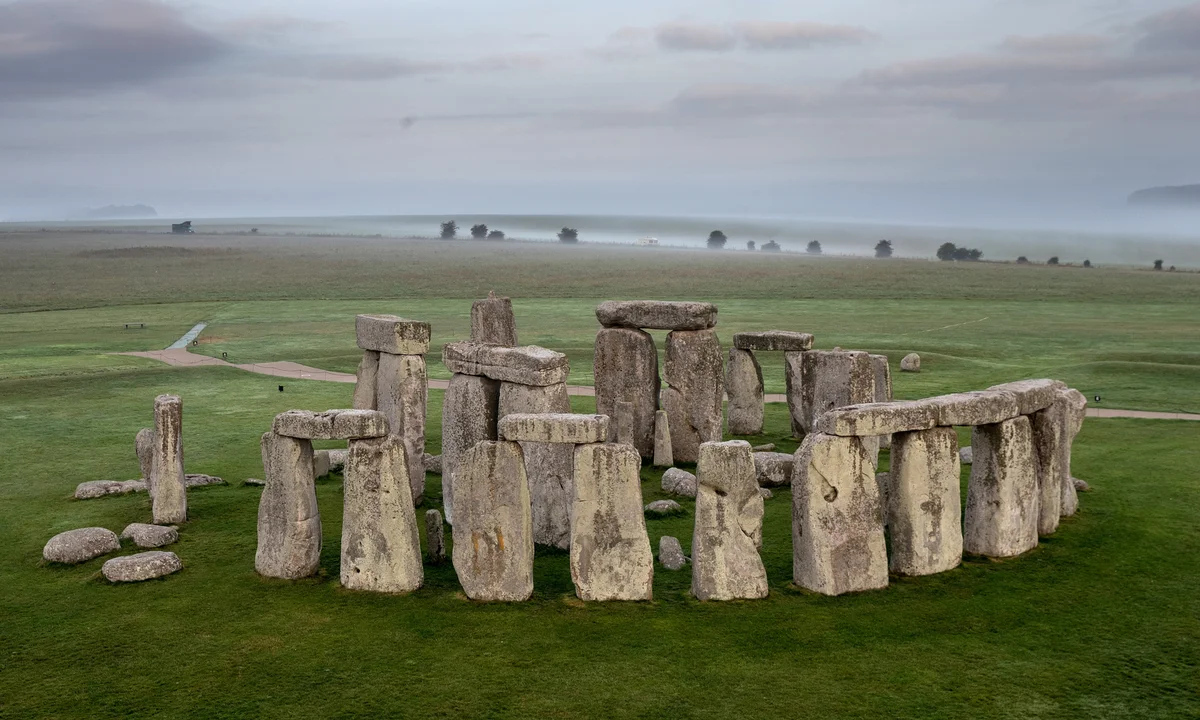
Stonehenge mystery solved after 5,000 years? Here is the true purpose of the peculiar monument
One of the biggest mysteries of the iconic monument of England, Stonehenge, is its purpose. Scientists have finally figured out why the peculiar monument was built about 5,000 years ago.
According to a new study, the famous circle in Wiltshire was built as a symbol of the unification of three different parts of the UK. And that is why the stones for its construction were brought from different regions, writes DailyMail.
Stonehenge’s rocky slabs are known to have been transported far from southwestern Wales and northeastern Scotland. Therefore, scientists from University College London and Aberystwyth University suggest that the Scots and Welsh brought their local stones to Wiltshire as a friendly contribution to the construction of the structure.
Scholars emphasize that in this sense, Stonehenge represented a powerful – and very early – symbol of British unity. The builders of the monumental structure were trying to establish “political unification and shared identity across much or even all of Britain,” the researchers say.
“Bringing together these extraordinary and alien rocks… symbolised and embodied far and distant communities within a complex material. [Stonehenge was a] monumental expression of unity between people, land, ancestors and the heavens,” the authors of the study add.
“The fact that all of its stones originated from distant regions, making it unique among over 900 stone circles in Britain, suggests that the stone circle may have had a political as well as a religious purpose,” said lead author Professor Mike Parker Pearson of the UCL Institute of Archaeology.
Despite the fact that England, Scotland and Wales did not exist as concepts when Stonehenge was built more than 5,000 years ago, scientists say that this structure truly represents all three countries.
Stonehenge is known for its large slabs of sandstone known as sarsens, which were sourced locally – probably brought from the West Woods in Wiltshire.
In addition to the tall boulders, Stonehenge’s characteristic appearance is created by about 80 “bluestones”. Experts agree that they come from Craig Rhos-y-Felin in the Preseli Hills in southwest Wales.
However, the Altar Stone, the largest six-ton bluestone in the center of Stonehenge, actually came from northern Scotland – 1,000 km away, as scientists discovered earlier this year.
The team of scientists says that the Altar Stone was brought by the inhabitants of northern Neolithic Scotland as a contribution or gift to the southerners.
“[This was] perhaps to cement an alliance or to take part in the extraordinary long-distance collaboration that building Stonehenge represented and embodied,” the experts say.
Similarly, the blue stones may have been transported by people from the Preseli hills in southwest Wales as their own contribution-illustrating “a political unification or a sacred peace.”
The new study now defines the construction of Stonehenge “as a monument of island-wide unification, embodied in part through the distant and diverse origins of its stones.”
“The similarities in architecture and material culture between the Stonehenge area and northern Scotland now make more sense. It’s helped to solve the puzzle of why these distant places had more in common than we might have once thought,” said Professor Pearson.




Comments (0)